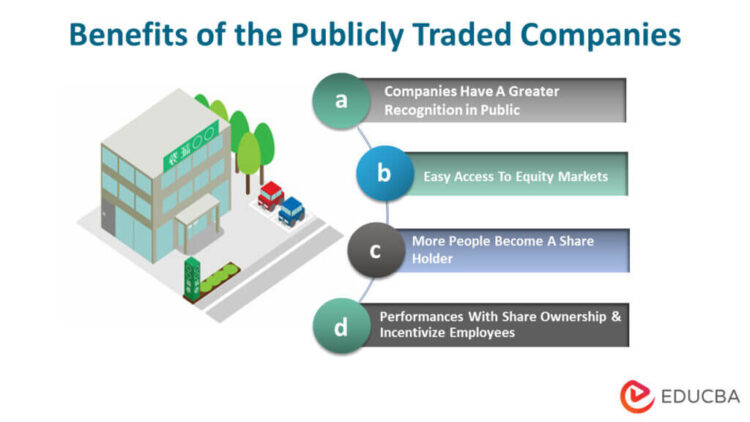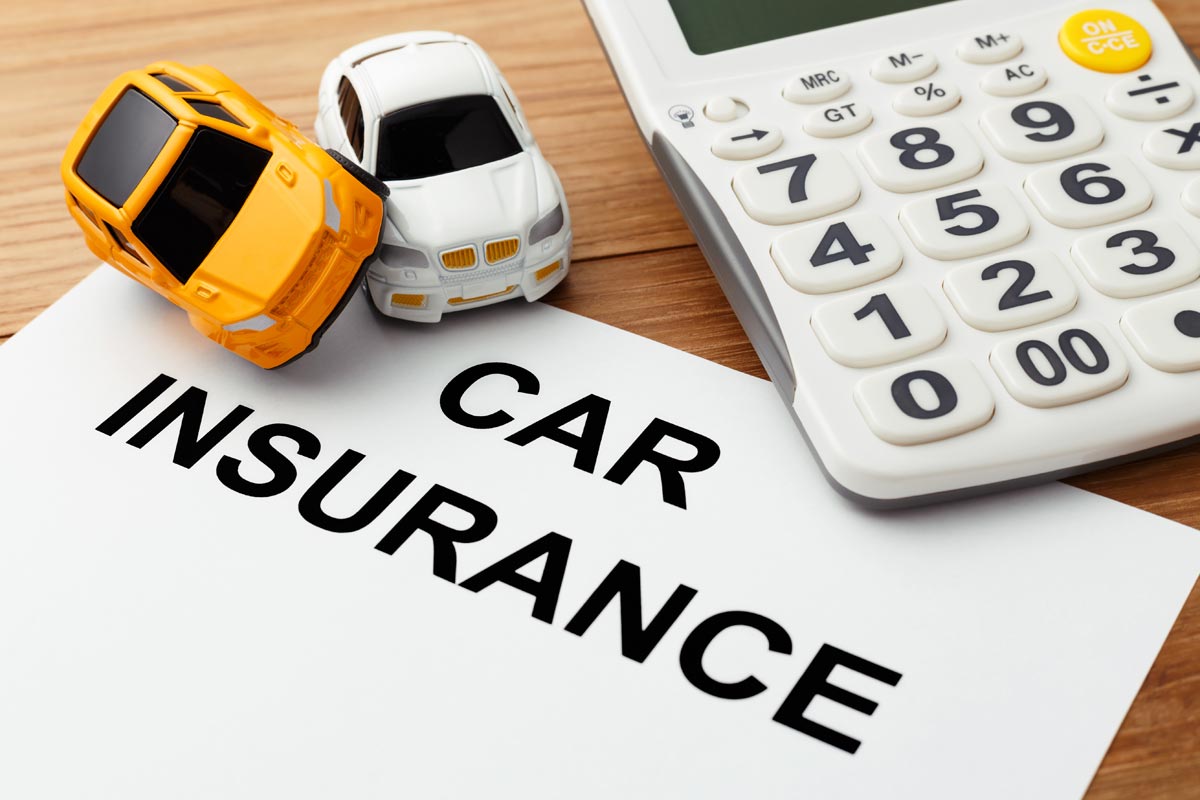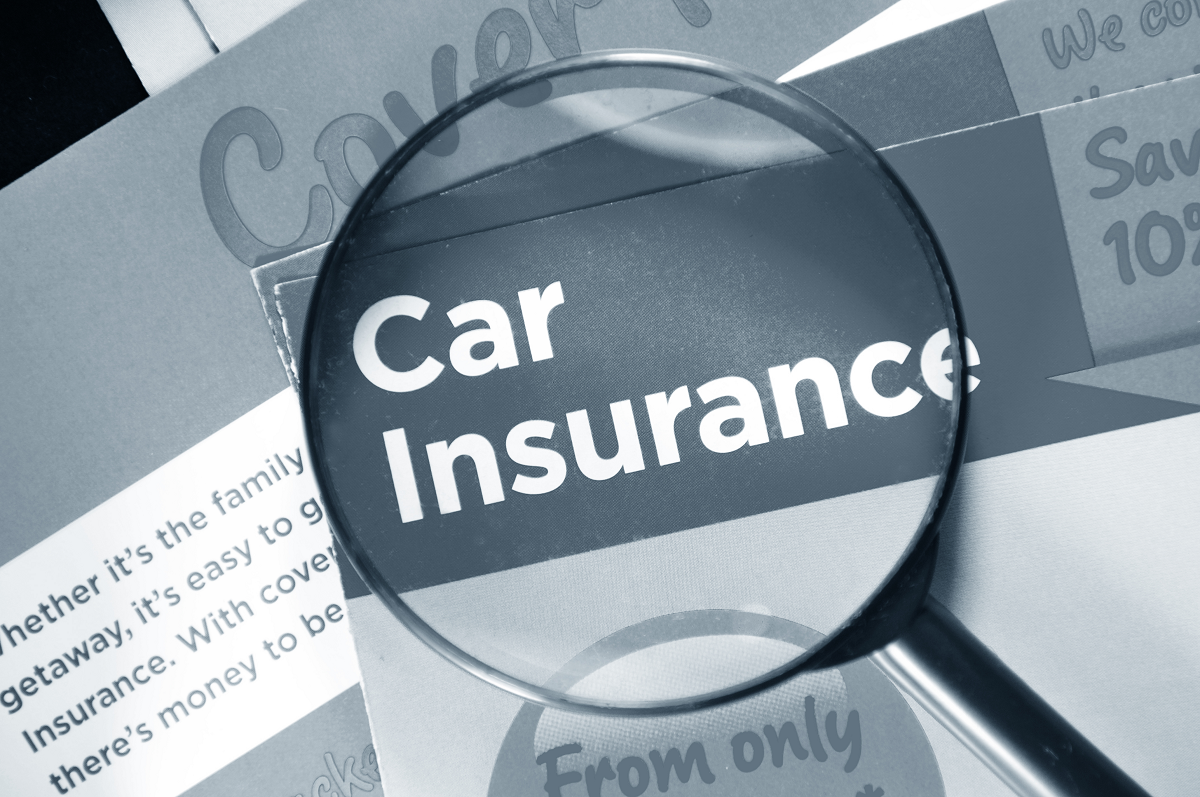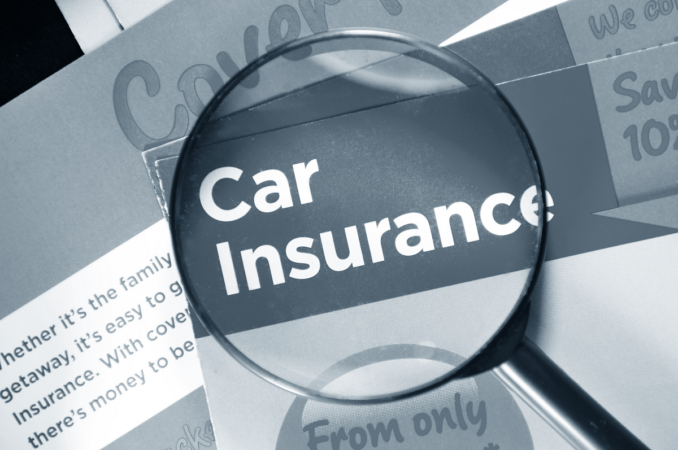
Car insurance is an essential aspect of responsible vehicle ownership, providing financial protection against unforeseen events. It acts as a safety net, shielding you from the potential costs associated with accidents, theft, or damage to your vehicle. From understanding the different types of coverage available to navigating the claims process, this comprehensive guide will equip you with the knowledge you need to make informed decisions about your car insurance.
The world of car insurance can be complex, with numerous factors influencing your premiums and a wide array of policy options available. This guide aims to demystify the process, empowering you to choose the right coverage for your needs and budget.
Understanding Car Insurance
Car insurance is a type of insurance that protects you financially in the event of an accident or other incident involving your vehicle. It provides coverage for damages to your car, injuries to yourself or others, and other related expenses.
Types of Car Insurance Coverage
Car insurance policies typically include several types of coverage. Each coverage protects you from different risks.
- Liability Coverage: This coverage protects you financially if you are at fault in an accident that causes damage to another person’s property or injuries to another person. It covers the other person’s medical bills, lost wages, and property damage. There are two main types of liability coverage:
- Bodily Injury Liability: This coverage pays for the medical expenses and lost wages of other people injured in an accident that you caused. It is usually expressed as a limit per person and a limit per accident.
- Property Damage Liability: This coverage pays for damages to another person’s property if you are at fault in an accident. It is usually expressed as a single limit per accident.
- Collision Coverage: This coverage pays for repairs or replacement of your car if it is damaged in a collision with another vehicle or object. It covers the cost of repairs or replacement, minus your deductible. This coverage is optional and not required in most states.
- Comprehensive Coverage: This coverage pays for repairs or replacement of your car if it is damaged in an event other than a collision, such as theft, vandalism, fire, or natural disasters. It covers the cost of repairs or replacement, minus your deductible. This coverage is optional and not required in most states.
- Uninsured/Underinsured Motorist Coverage: This coverage protects you if you are involved in an accident with a driver who does not have insurance or does not have enough insurance to cover your damages. It pays for your medical expenses, lost wages, and property damage. This coverage is optional in most states, but it is highly recommended.
- Personal Injury Protection (PIP): This coverage pays for your medical expenses and lost wages if you are injured in an accident, regardless of who is at fault. It is required in some states and is optional in others. It is also known as no-fault insurance.
- Medical Payments Coverage: This coverage pays for your medical expenses, regardless of who is at fault. It is usually a lower limit than PIP and is often included in liability coverage. It is also known as Med Pay.
Common Car Insurance Claims
Examples of common car insurance claims include:
- Collision with another vehicle: This is the most common type of car insurance claim. It can occur when two or more vehicles collide with each other. The claim may involve damages to both vehicles and injuries to the drivers or passengers.
- Collision with an object: This type of claim can occur when a vehicle collides with a stationary object, such as a tree, pole, or building. The claim may involve damages to the vehicle and injuries to the driver or passengers.
- Theft: This type of claim occurs when a vehicle is stolen. The claim may involve the cost of replacing the stolen vehicle or covering any damages to the vehicle.
- Vandalism: This type of claim occurs when a vehicle is damaged by vandalism. The claim may involve the cost of repairing or replacing the damaged parts of the vehicle.
- Fire: This type of claim occurs when a vehicle is damaged by fire. The claim may involve the cost of repairing or replacing the damaged parts of the vehicle.
- Natural disaster: This type of claim occurs when a vehicle is damaged by a natural disaster, such as a flood, earthquake, or hurricane. The claim may involve the cost of repairing or replacing the damaged parts of the vehicle.
Factors Influencing Car Insurance Premiums

Car insurance premiums are calculated based on various factors, ensuring that the cost reflects the risk associated with insuring a particular driver and vehicle. These factors are designed to create a fair and equitable system where those with higher risk profiles pay more, while those with lower risk profiles pay less.
Age and Driving Experience
Age and driving experience are two key factors that heavily influence car insurance premiums. Younger drivers, especially those under 25, are statistically more likely to be involved in accidents due to factors such as inexperience, risk-taking behavior, and a lack of mature judgment. Therefore, they generally face higher premiums compared to older, more experienced drivers. As drivers gain experience and age, their premiums typically decrease, reflecting the lower risk they pose to insurance companies.
Driving History
A driver’s driving history is another critical factor that determines car insurance premiums. This includes any past accidents, traffic violations, and driving convictions. Drivers with a clean driving record, free from accidents and violations, enjoy lower premiums. However, drivers who have been involved in accidents or have a history of traffic violations are considered higher risk and may face significantly higher premiums.
Vehicle Type
The type of vehicle you drive plays a significant role in your car insurance premiums. Vehicles with higher repair costs, such as luxury cars, sports cars, or SUVs, typically attract higher premiums. This is because insurance companies anticipate paying more in the event of an accident or damage to these vehicles. Conversely, smaller, less expensive vehicles usually come with lower premiums.
Location
The location where you live can also impact your car insurance premiums. Areas with higher crime rates, more traffic congestion, and a greater number of accidents tend to have higher premiums. Insurance companies consider the risk associated with the geographic location when determining premiums.
Driving Habits
Your driving habits, such as your annual mileage, the purpose of your driving, and whether you drive primarily in urban or rural areas, can also influence your premiums. Drivers who commute long distances or frequently drive in congested areas are often considered higher risk and may pay more for insurance.
Safety Features
Vehicles equipped with advanced safety features, such as anti-lock brakes, electronic stability control, and airbags, can often qualify for lower car insurance premiums. These features can reduce the severity of accidents and lower the cost of repairs, leading to lower insurance costs for drivers.
Choosing the Right Car Insurance Policy

Choosing the right car insurance policy is crucial to ensure you have adequate protection in case of an accident or other unforeseen events. The right policy will provide peace of mind, knowing you’re covered for potential financial losses.
Comparing Car Insurance Policies
It’s essential to compare different car insurance policies to find the best option for your needs and budget. This comparison should consider the coverage, cost, and benefits offered by each policy.
| Policy Type | Coverage | Cost | Benefits |
|---|---|---|---|
| Liability Only | Covers damage to other vehicles or property and injuries to others in an accident, but not your own vehicle. | Lowest cost | Basic protection for legal and financial liabilities. |
| Collision and Comprehensive | Covers damage to your own vehicle in an accident or from other events like theft, vandalism, or natural disasters. | Higher cost | Protects your vehicle and provides financial assistance for repairs or replacement. |
| Full Coverage | Combines liability, collision, and comprehensive coverage. | Highest cost | Most comprehensive protection for all types of incidents. |
Tips for Finding the Best Car Insurance Deal
- Shop around and compare quotes: Get quotes from multiple insurance companies to compare prices and coverage options.
- Consider discounts: Ask about available discounts, such as good driver discounts, safe driver discounts, and multi-policy discounts.
- Increase your deductible: A higher deductible generally results in lower premiums, but you’ll have to pay more out-of-pocket if you need to file a claim.
- Review your coverage needs: Ensure your coverage meets your current needs and adjust it as necessary.
- Read the fine print: Carefully review the policy documents to understand the terms and conditions.
Understanding Your Individual Needs and Coverage Requirements
It’s crucial to understand your specific needs and coverage requirements when choosing car insurance. Factors to consider include:
- Your driving history: A clean driving record will typically result in lower premiums.
- Your vehicle’s value: The value of your vehicle will influence the cost of collision and comprehensive coverage.
- Your location: Insurance premiums can vary based on the area you live in.
- Your personal financial situation: Your budget and ability to pay deductibles will impact your choice of coverage.
Car Insurance Claims Process
Filing a car insurance claim can be a stressful experience, but understanding the process can make it smoother. This section Artikels the steps involved in filing a claim, the role of insurance adjusters, and the documents you’ll need.
Steps Involved in Filing a Car Insurance Claim
Following a car accident, the first step is to ensure the safety of everyone involved. After confirming everyone is safe, you should:
- Contact the authorities: Call the police to report the accident, especially if there are injuries or significant property damage. They will create an accident report, which will be crucial for your claim.
- Document the accident: Take pictures of the damage to your vehicle and the accident scene, including any skid marks or road signs. Note down the details of the other driver, their insurance information, and any witnesses present.
- Contact your insurance company: Inform your insurance company about the accident as soon as possible. They will guide you through the claims process and provide you with a claim number.
- File a claim: Complete the necessary claim forms and submit them to your insurance company, along with the required documentation.
- Cooperate with the adjuster: An insurance adjuster will be assigned to your claim. They will investigate the accident, assess the damage, and determine the amount of compensation you are eligible for.
- Negotiate the settlement: Once the adjuster has completed their investigation, they will present you with a settlement offer. You have the right to negotiate this offer if you believe it is not fair or adequate.
Role of Insurance Adjusters
Insurance adjusters are responsible for investigating car insurance claims. They play a crucial role in determining the cause of the accident, assessing the extent of the damage, and evaluating the claim. Adjusters typically:
- Review the accident report and gather information from all parties involved.
- Inspect the damaged vehicle and assess the repair costs.
- Determine the liability for the accident and the amount of compensation owed.
- Negotiate a settlement with the policyholder.
Claim Settlement Process
The claim settlement process can vary depending on the insurance company and the complexity of the claim. However, it generally involves these steps:
- Claim filing: The policyholder files a claim with their insurance company, providing the necessary documentation.
- Investigation: The insurance adjuster investigates the accident, gathers evidence, and assesses the damage.
- Evaluation: The adjuster determines the amount of compensation the policyholder is eligible for based on the policy coverage and the extent of the damage.
- Settlement offer: The adjuster presents a settlement offer to the policyholder. This offer can include payment for repairs, medical expenses, lost wages, and other related costs.
- Negotiation: The policyholder can negotiate the settlement offer if they believe it is not fair or adequate.
- Claim payment: Once a settlement is reached, the insurance company pays the claim amount to the policyholder or directly to the repair shop.
Documents Needed for a Car Insurance Claim
To file a car insurance claim, you will need to provide your insurance company with the following documents:
- Accident report: A copy of the police report filed for the accident.
- Driver’s license and registration: Your driver’s license and vehicle registration information.
- Insurance policy information: Your insurance policy number and coverage details.
- Proof of loss: Evidence of the damage to your vehicle, such as repair estimates, photographs, or video footage.
- Medical records: If you sustained injuries, you will need to provide your medical records and bills.
- Other relevant documentation: Any other documents that support your claim, such as witness statements or photographs of the accident scene.
Car Insurance Myths and Misconceptions

Car insurance is a crucial aspect of responsible vehicle ownership, but many misconceptions surround it. Understanding the truth behind these myths is essential to make informed decisions about your coverage.
Common Car Insurance Myths
It’s important to distinguish between fact and fiction when it comes to car insurance. Misinformation can lead to inadequate coverage, financial hardship, and unnecessary expenses.
- Myth: A clean driving record means you’ll get the lowest rates. Fact: While a clean record is beneficial, other factors, such as your vehicle’s make and model, location, age, and driving history, also influence premiums.
- Myth: You don’t need comprehensive or collision coverage if your car is old. Fact: These coverages protect you from financial losses in case of accidents or damage, regardless of the vehicle’s age.
- Myth: A higher deductible always means lower premiums. Fact: While a higher deductible usually results in lower premiums, it also means you’ll pay more out of pocket if you file a claim.
- Myth: You can’t switch insurance companies if you have a claim. Fact: You can switch insurance companies at any time, even if you’ve filed a claim. However, your new insurer may consider your claim history when setting your premiums.
- Myth: Car insurance is only necessary for new cars. Fact: Even if your car is older, car insurance protects you from financial losses due to accidents, theft, or damage.
Understanding Your Policy
It’s crucial to thoroughly understand your car insurance policy to ensure you have the right coverage and avoid any surprises.
Read your policy carefully, paying attention to the coverage limits, deductibles, exclusions, and any specific terms and conditions.
- Coverage Limits: These define the maximum amount your insurer will pay for covered losses.
- Deductibles: The amount you pay out of pocket before your insurance kicks in.
- Exclusions: Specific situations or events not covered by your policy.
Car Insurance Tips and Strategies
Finding affordable car insurance can be a challenge, but there are ways to save money and ensure you have the right coverage. This section provides practical tips and strategies to help you navigate the world of car insurance effectively.
Saving Money on Car Insurance
Saving money on car insurance is a priority for many drivers. There are several strategies you can employ to reduce your premiums.
- Shop around for quotes: Comparing quotes from different insurance companies can help you find the best rates. Online comparison websites make this process easier.
- Increase your deductible: A higher deductible means you pay more out of pocket in case of an accident, but it can lead to lower premiums. Consider your financial situation and risk tolerance when deciding on your deductible.
- Bundle your policies: Many insurers offer discounts if you bundle your car insurance with other policies, such as home or renters insurance.
- Maintain a good driving record: Avoid traffic violations and accidents, as these can significantly increase your premiums.
- Take advantage of discounts: Many insurers offer discounts for safe driving, good grades, and other factors. Ask your insurer about available discounts.
- Consider a telematics device: Some insurers offer discounts if you use a telematics device that tracks your driving habits. These devices can help you identify areas for improvement and potentially lower your premiums.
Maintaining a Good Driving Record
A good driving record is crucial for keeping your car insurance premiums low. Here are some strategies to help you avoid accidents and traffic violations:
- Drive defensively: Be aware of your surroundings, anticipate potential hazards, and maintain a safe distance from other vehicles.
- Avoid distractions: Put away your phone, avoid eating while driving, and resist the temptation to engage in other activities that could distract you from the road.
- Follow traffic laws: Obey speed limits, use your turn signals, and avoid driving under the influence of alcohol or drugs.
- Get regular car maintenance: Ensure your car is in good working order by getting regular maintenance checks. This can help prevent breakdowns and accidents.
- Take a defensive driving course: These courses can teach you valuable driving skills and help you avoid accidents.
Avoiding Car Insurance Scams
Unfortunately, car insurance scams are a reality. Being aware of common scams can help you protect yourself.
- Beware of unsolicited calls or emails: If you receive a call or email claiming to be from your insurance company, but you didn’t initiate contact, be cautious. Verify the information with your insurer before providing any personal details.
- Don’t fall for “too good to be true” offers: If an insurance company offers significantly lower premiums than others, be wary. It’s possible they are not legitimate.
- Check the insurer’s credentials: Make sure the insurance company is licensed and reputable. You can check their credentials with your state’s insurance department.
- Read the policy carefully: Before signing up for a policy, carefully read the terms and conditions to understand your coverage and responsibilities.
Ultimate Conclusion
In conclusion, car insurance plays a vital role in ensuring your financial well-being and peace of mind on the road. By understanding the intricacies of coverage options, factors influencing premiums, and the claims process, you can make informed decisions that protect you and your vehicle. Remember to review your policy regularly, explore ways to save money, and stay vigilant against common insurance scams.
Frequently Asked Questions: Car Insurance
How often should I review my car insurance policy?
It’s recommended to review your car insurance policy at least annually, or whenever there are significant life changes, such as a new vehicle, change in driving habits, or a move to a new location.
What are some common car insurance scams?
Beware of scams involving fake insurance companies, promises of unrealistically low premiums, or requests for personal information over the phone or email without proper verification.





